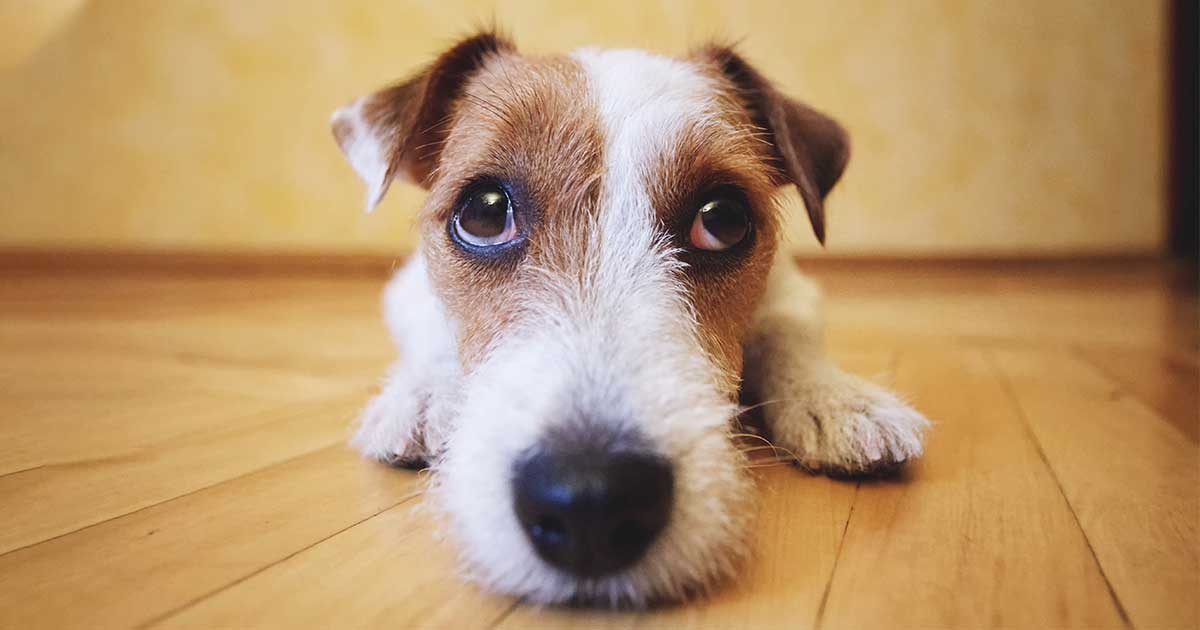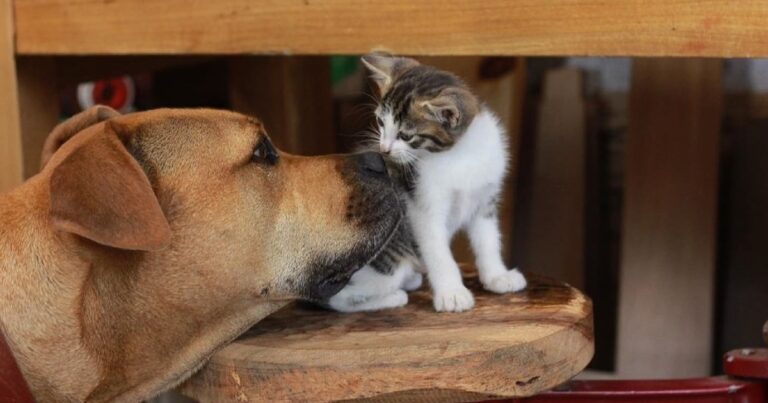“Rescue Me” is a recurring column by Samantha Randall, editor-in-chief at Top Dog Tips. She’ll provide personal anecdotes and perspective about her life as a pet lover with a passion for cat and dog rescue. Today, she offers tips about caring for a rescue pet that has been abused.
Adopting a rescue dog is always a big step, and sometimes you don’t know the personality of the pup you are adopting until you’ve cohabitated for a while. While most rescue organizations and local shelters offer some information about the animal’s previous history, that history is not always complete or even possible to obtain.
That means that you might be inadvertently adopting a dog with a history of abuse. Or you may know that the dog has a history of abuse and still decide to adopt him or her. I will go over signs that point to formerly abused dog, and then try to give you some pointers on how to take proper care of this new family member.
Signs of Past Abuse in Dogs
Previously abused dogs can display different signs and a wide variety of emotions. This includes shyness or social withdrawal, mistrust, physical inactivity, fear and depression. However, it is not always easy to recognize signs of abuse since dogs can express their emotions in numerous ways.
Formerly abused dogs will often cower if they are afraid, or try to hide or crawl away. Some dogs may urinate around the house or try to escape the room when they feel scared. Other dogs may turn to aggression as a defense system and try to bite you.
Of course, these reactions can be caused by certain medical problems as well, so if you don’t know that your new dog has a history of abuse, take them to the veterinarian to rule out potential medical issues.
How to Care for a Formerly Abused Rescue
If you notice some of the signs I’ve mentioned, you may be dealing with a formerly abused dog. This means that you need to learn how to approach the animal and care for them in a specific way.
Don’t Change Their Name
If the dog you adopted already has a name, it’s best not to change it. The dog is going through many adjustments already with adoption, and changing their calling card will confuse the pet and make it harder for you to connect with your new pup.
Make sure to use a happy tone of voice when you call your dog’s name. That can help you create positive vibes between the two of you.
Take Care of Their Basic Needs
An obvious strategy to help establish trust is to take care of your dog’s basic needs, and do it well. This will also help you gain the formerly abused animal’s affection. This includes feeding your dog regularly and on a strict schedule, making sure they always have access to fresh water, taking them to the veterinarian for regular checkups, etc. You also need to ensure that your pooch eats a healthy diet and gets regular exercise.
Provide a Safe Space
Taking care of a formerly abused rescue means that you will have to deal with situations in which your new dog will become scared. When this happens, let the pup have some space and don’t try to force your dog to engage with you.
It is best if you can create a safe space where your pooch can retreat if they feel overwhelmed. Take your dog’s preference into consideration when you try to establish a space all for them. That can be a kennel, a doggy bed or wherever else your dog seems to be most comfortable when scared. When your furry friend retreats to the safe space, let them relax and don’t try to interact. Let them decide when they are ready to leave the space and interact with you.
Identify Triggers
Your pooch can show signs of previous abuse as a result of interacting with objects or situations that remind them of the abuse. For example, seeing a belt can trigger a reaction in a dog that has been beaten with a belt before.
Pay attention to your dog’s reactions, and try to identify things or actions that trigger fear. If you identify these triggers, you can remove them from the environment and protect your furry friend from unnecessary stress and anxiety.
Show Them Love
Showing affection is the best way to earn your dog’s trust, but you need to be careful when you do it. Pet your pooch delicately, especially if the dog is fearful when you bring your hands near. When you try to pet him or her, keep your palm up and pet them under the head.
Make sure that your dog sees you coming to pet them. Don’t try to sneak up so you can get closer than they are comfortable with. That will not help you build trust, and you may even get bitten if the dog is scared. Provide your dog with daily exercise. This is important both for their health and for creating a bond. Walk them as often as you can and play when they feel comfortable with it. Give them plenty of attention, but be delicate about it and don’t smother.
Train Your Dog
Training your dog is both practical and a fun way to create trust and build up confidence. You can start by teaching some basic commands, like “sit,” “stop,” “come,” “heel,” etc. Keep in mind that this will take time, especially if your dog still doesn’t trust you completely.
When you train your dog, it is best to use rewards instead of punishments, especially if your dog was previously abused. Perhaps the best way to train your dog is through “click and treat” training, or “clicker training.”
Be Patient
Don’t shout or try to force your dog to do something they are not comfortable with. Speak quietly, even when you issue commands. Don’t lose your temper, even if they have an accident in the house.
You can’t expect to turn things around after a couple of days. You need to be patient and give your new dog time to accept the new living situation and get over their fear. It can take months or even years for formerly abused dogs to recover and go from a reclusive and scared pooch to a trusting and loving companion.
However, you also need to temper your expectations because in most cases, you can never achieve a full resolution of the issues. Of course, this isn’t a reason to give up. Even if you don’t transform your new dog completely, with time they will learn to trust you and let go of their fears.
Seek Professional Help
Sometimes your new dog may struggle to get over their fears even if you do everything right. If you feel like you have tried everything and for a long time, it may be best to seek professional help.
For example, you can find a dog behaviorist to help you or get a certified dog trainer if your dog isn’t learning with your help alone.
Taking care of a formerly abused rescue can be extremely challenging but also a rewarding experience. The most important things to remember are to have patience and wait for your new dog to overcome their fears at their own pace.
RELATED POSTS: Explore more adoption-related blogs
Craving more content?
- Wondering what to feed your new rescue? Explore our full range of dog food formulas here.
- If your recent rescue is a puppy, sign up for our Puppy Love newsletter for tips and info about the first 15 months of your dog’s life.







